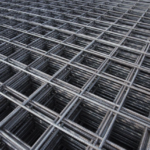Concrete structures form the backbone of modern construction, and rebar detailing is integral to their success. By ensuring proper reinforcement, rebar detailing enhances the strength, stability, and longevity of buildings, bridges, and other infrastructures. This blog explores the significance of rebar detailing, its application in concrete structure design, and its benefits for construction projects.
What is Rebar Detailing?
Rebar detailing refers to the precise planning and representation of steel reinforcement bars (rebars) in concrete structures. It involves creating detailed drawings and blueprints that specify the placement, type, size, and spacing of rebars within beams, columns, slabs, and other structural components.
These drawings ensure that the reinforcement aligns with the design intent and adheres to construction codes. High-quality rebar detailing services play a crucial role in optimizing resource utilization, minimizing errors, and improving construction efficiency. For example, beam rebar details and column rebar details are tailored to distribute loads effectively, preventing structural failure over time.
Importance of Rebar Detailing in Structural Design
Rebar detailing is more than just a technical process—it’s essential for structural integrity. The main roles rebar detailing plays in concrete structure design include:
1. Ensuring Load-Bearing Capacity
Rebar detailing ensures that reinforced concrete can bear the required loads by distributing stresses uniformly. Be it in slabs, columns, or beams, accurate rebar placement enhances structural resilience against forces like compression, tension, and bending.
2. Improving Durability
Properly detailed reinforcements protect concrete structures from cracking and deterioration caused by environmental factors such as temperature changes and corrosion. This extends the lifespan of structures while reducing maintenance costs.
3. Optimizing Material Usage
Through meticulous rebar detailing, engineers can reduce wastage of steel by calculating precise reinforcement needs. This not only saves costs but also aligns with sustainable construction practices.
Key Components of Rebar Detailing
1. Beam Rebar Detail
Beam rebar detailing involves specifying the type, size, and arrangement of rebars within beams. This ensures beams can effectively transfer loads to supporting elements like columns and foundations. Accurate beam rebar details help prevent issues like sagging and cracking under load. Structural engineering often rely on precise beam detailing to achieve optimal load distribution.
2. Column Rebar Detail
Columns are crucial for supporting vertical loads, and column rebar detailing ensures they have the necessary strength and stiffness. Detailing involves designing vertical rebars for compression and lateral ties or spirals for confinement, providing stability against buckling.
3. Bar Bending Schedules
A bar bending schedule (BBS) outlines the cutting, bending, and placement of rebars. It simplifies the construction process by providing detailed information for on-site execution, reducing errors and saving time.
4. Connection and Anchorage Details
Rebar detailing also includes specifying connections between structural elements. Proper anchorage ensures that rebars in adjoining elements work cohesively to handle stresses and prevent structural failures.
Rebar Detailing Services: Why They Matter
Engaging professional rebar detailing services ensures accuracy, efficiency, and compliance with design standards. Advanced software like AutoCAD and Revit is commonly used to produce high-quality rebar detailing drawings. These services offer:
1. Precision in Design
Rebar detailing services eliminate ambiguities in structural drawings, ensuring seamless communication between engineers, architects, and contractors.
2. Compliance with Standards
By adhering to local and international construction codes, rebar detailing services guarantee safety and reliability in structural designs.
3. Time and Cost Savings
Detailed drawings enable smooth project execution, reducing delays and rework. Optimized reinforcement design also lowers material and labor costs.
4. Enhanced Project Coordination
With clear rebar detailing, stakeholders can collaborate effectively, minimizing conflicts and improving overall project outcomes.
Challenges in Rebar Detailing and How to Overcome Them
While rebar detailing is indispensable, it comes with challenges such as:
1. Complex Designs
Modern structures often have intricate designs that require advanced rebar detailing techniques. Using specialized software and skilled professionals helps address these complexities.
2. On-Site Deviations
Variations between design and on-site implementation can lead to discrepancies. To mitigate this, engineers should conduct regular inspections and ensure alignment with the detailing plans.
3. Coordination Issues
Poor communication among project teams can cause errors in rebar detailing. Collaborative platforms and 3D modeling tools can enhance coordination and reduce misinterpretations.
Benefits of Rebar Detailing for Concrete Structures
Investing in quality rebar detailing brings numerous benefits, including:
1. Enhanced Structural Safety
Precise detailing ensures that concrete structures can withstand expected loads and environmental stresses without compromising safety.
2. Efficient Construction Processes
With detailed rebar plans, construction teams can work efficiently, reducing project timelines and avoiding costly errors.
3. Better Resource Management
Rebar detailing helps optimize steel usage, ensuring projects remain cost-effective and environmentally friendly.
4. Longevity of Structures
Well-designed reinforcements protect concrete structures from premature failures, ensuring durability and performance over their lifecycle.
Conclusion
Rebar detailing is a cornerstone of concrete structure design, enabling safe, durable, and efficient construction. From beam and column rebar details to comprehensive rebar detailing services, this process ensures the seamless integration of steel reinforcements into concrete structures. By leveraging advanced tools and professional expertise, construction projects can achieve superior quality and sustainability. Whether you’re designing a small building or a massive infrastructure project, investing in accurate rebar detailing is key to long-term success.

